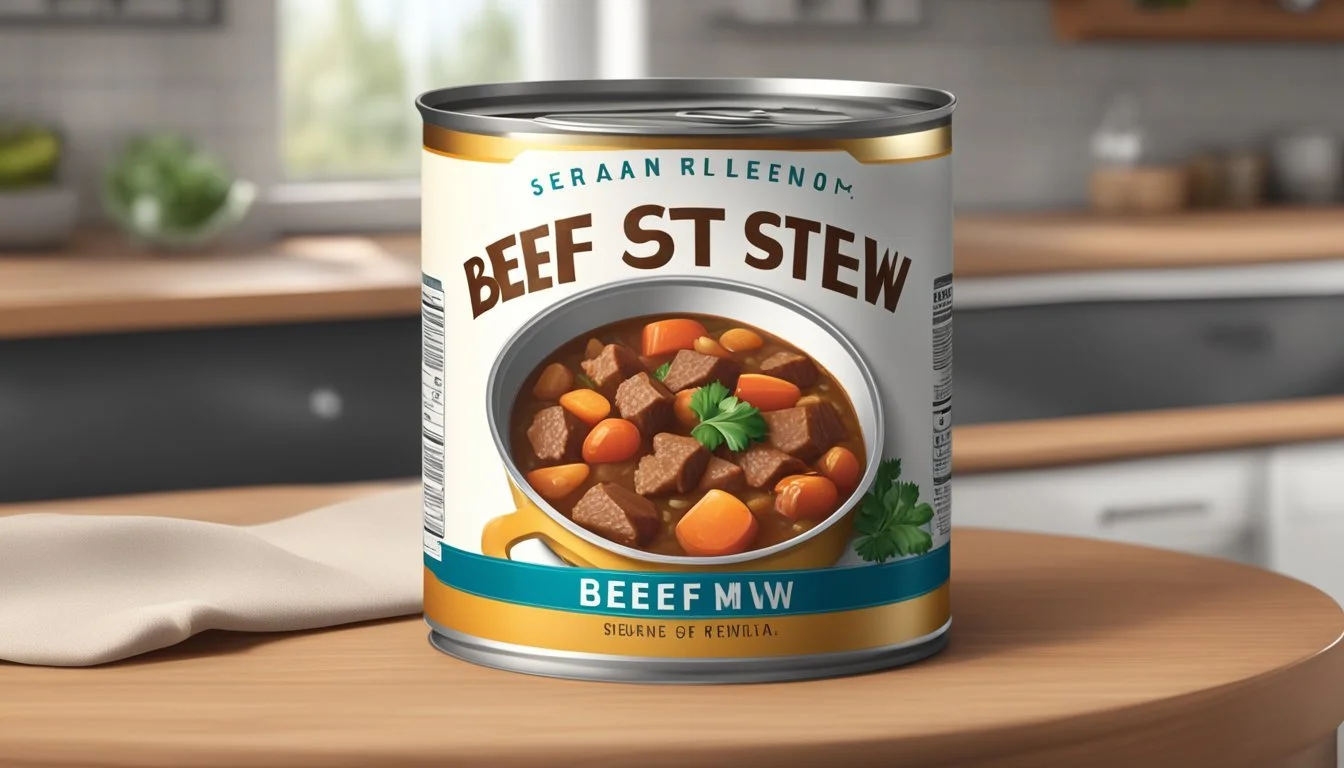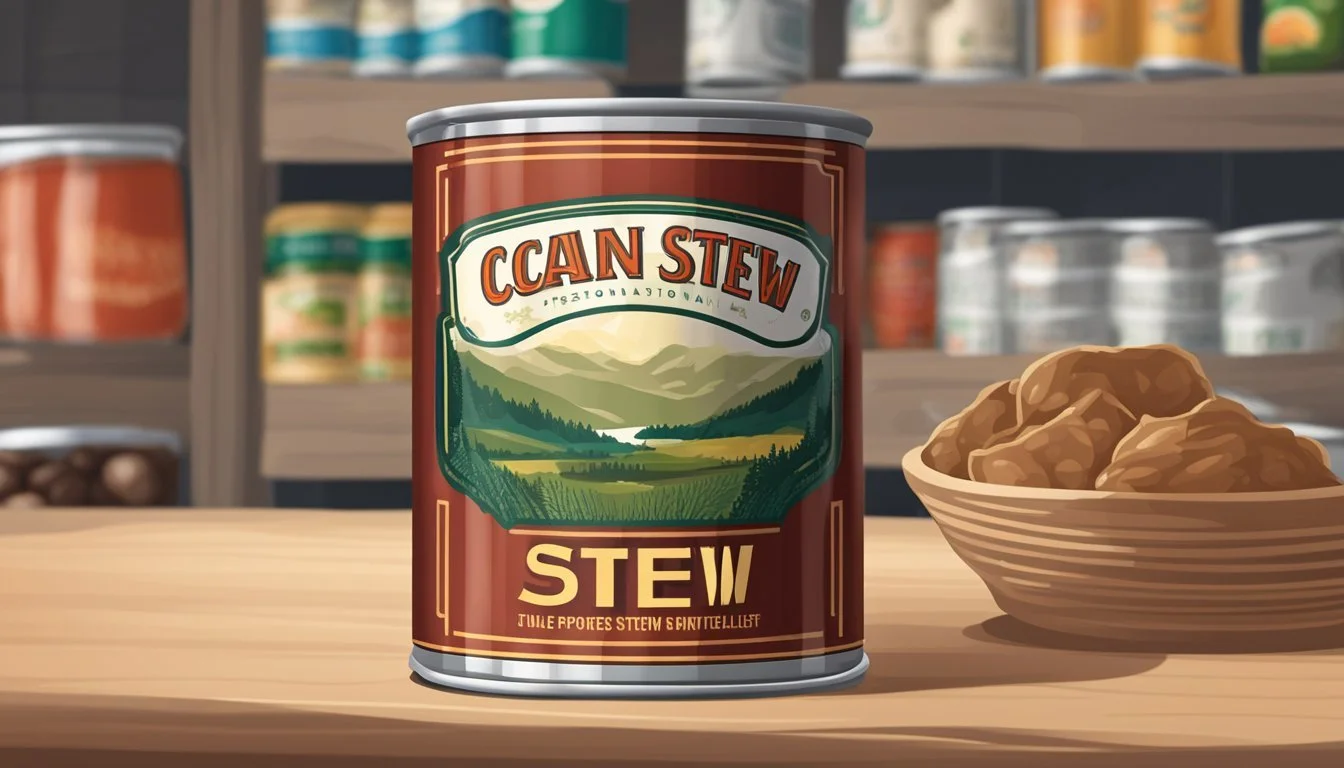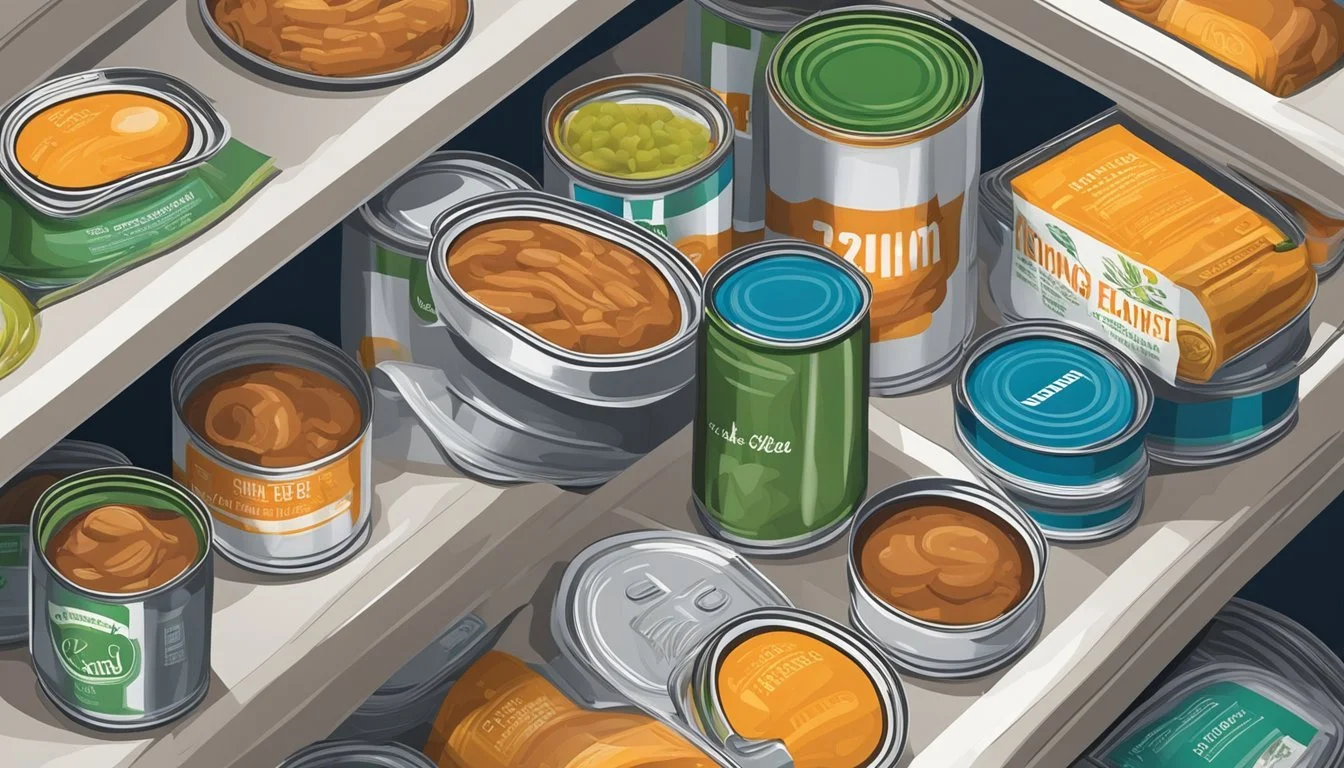Does Canned Beef Stew Expire?
Shelf Life and Storage Tips
Canned beef stew can serve as a convenient and reliable food option, making it a staple in many households. When stored correctly, unopened cans of beef stew can last for 3 to 5 years. Proper storage conditions include keeping the cans in a cool, dry place, preferably between 50°F and 70°F, and away from direct sunlight to maintain quality.
Safety is also a key consideration. While the stew may remain safe to eat beyond its best-by date, flavor and texture might degrade over time. It is essential to check the cans for signs of damage or spoilage, such as dents, bulging, or rust, to ensure the stew remains safe for consumption.
Understanding the shelf life and storage guidelines of canned beef stew can help maximize its longevity and ensure it maintains its quality and safety. These insights can make a significant difference, especially for those relying on canned goods as a part of their emergency food supplies or everyday meals.
Understanding Canned Beef Stew
Canned beef stew is a popular food item known for its long shelf life and convenience. This section will examine what canned beef stew is, how it is made, and the preservatives and additives that help maintain its quality.
What Is Canned Beef Stew?
Canned beef stew typically includes beef, vegetables, and a thick, savory broth. Ingredients such as potatoes, carrots, and peas are commonly added. Canned foods like beef stew offer the advantage of being shelf-stable for extended periods, making them useful for emergencies or quick meals. The stew is cooked and then hermetically sealed into cans, preserving its freshness.
The Canning Process
The process includes preparing the ingredients, cooking, and then sealing them in cans. Commercial canning ensures that the food is cooked at high temperatures to kill any bacteria and create a vacuum seal. This seal is crucial for maintaining the integrity of the can and preventing spoilage. Home canning follows similar steps but requires specific equipment and knowledge to ensure safety and quality.
Preservatives and Additives
Preservatives used in canned beef stew help extend its shelf life further. Common additives may include salt, nitrates, and other compounds to maintain flavor and texture. These preservatives are essential for keeping the ingredients stable and preventing the stew from degrading over time. Can integrity is also vital, as any damage to the can could cause contamination or spoilage.
Storage Fundamentals
Proper storage of canned beef stew ensures its longevity and maintains its best quality. Keeping cans in ideal conditions and avoiding common storage errors are crucial.
Optimal Storage Conditions
To maximize shelf life, canned beef stew should be stored in a cool, dry place. A pantry, basement, or garage with stable temperatures between 50°F to 70°F is ideal. Excessive heat or cold can compromise the quality of the stew.
Temperature control is vital; aim to keep the environment below 75°F. Avoid storing cans where they might be exposed to temperature extremes, such as near stoves, heaters, or in uninsulated garages during summer or winter.
Relative humidity should be below 85% to prevent can corrosion. Direct sunlight must be avoided because UV rays can degrade the food quality. Ensure the storage area is clean and free from pests to maintain food safety.
Common Storage Mistakes
Several mistakes can reduce the shelf life of canned beef stew. Storing cans in areas prone to temperature fluctuations like attics or uninsulated spaces can deteriorate the stew's quality faster. Always aim for a consistent, cool environment.
Avoid areas with high humidity, such as damp basements or areas near sinks, which can cause cans to rust. Direct sunlight exposure is another common error, leading to quality degradation.
Stacking cans directly on cold floors or next to heat sources can also shorten shelf life. Instead, use shelves to keep cans off the ground and away from potential heat sources. Using airtight containers for opened cans helps prevent contamination and extends the shelf life of the remaining stew.
Spoilage and Food Safety
Canned beef stew, like all canned foods, has specific indicators that signal spoilage and food safety concerns. Understanding these indicators and knowing how to handle compromised products is crucial for maintaining health and safety.
Indicators of Spoilage
Several signs can help identify spoiled canned beef stew. Bulging cans often indicate that gas has formed inside due to bacterial activity. Leaking cans can signal a breach in the container, allowing bacteria to enter.
Other indicators include foul odors, which suggest contamination, as well as unnatural colors and textures. Examine the can for rust or severe dents, as these can also compromise the can's integrity and lead to spoilage.
Health Risks and Contamination
Spoiled canned beef stew can pose significant health risks. One of the most dangerous pathogens is Clostridium botulinum, which causes botulism—a severe form of food poisoning. Even a small amount of contaminated food can be deadly.
Bacteria and other microorganisms can thrive in compromised cans, leading to mold growth and other unsafe conditions. It is essential to adhere to expiration dates and discard any suspect cans to mitigate these risks.
Can Integrity and Damage
The physical condition of the can is a crucial factor in determining the safety of its contents. Dents, especially along the seams, can weaken the can and allow bacteria to penetrate. Rust can erode the can surface, leading to potential leaks.
Regular inspection for damaged or bulging cans is recommended. Storing cans in a cool, dry place will help prevent rusting and degradation. Maintaining the can’s integrity ensures that the stew remains safe to consume.
Shelf Life and Expiration
The longevity of canned beef stew depends on several factors such as storage conditions, packaging, and the presence of acidic or non-acidic ingredients.
Deciphering Expiration Dates
Canned beef stew often comes with an expiration date or sell-by date indicated on the packaging. These dates primarily signal the period for peak quality rather than a definitive safety cut-off.
According to the USDA, low-acid canned goods like beef stew can last 2 to 5 years if stored properly. After this period, the taste and quality might diminish, though the product could still be safe to consume. High-acid ingredients, if included, can potentially impact the shelf life by adding acidity, which may shorten longevity.
Factors Affecting Shelf Life
Several factors can influence the shelf life of canned beef stew:
Storage Temperature: Optimal storage temperature is between 50°F and 70°F. Avoiding temperature extremes is crucial.
Humidity: Keeping relative humidity levels below 85% prevents can corrosion, which can damage the stew.
Packaging: Intact cans without dents or damage preserve quality better.
Sunlight: Direct sunlight can degrade the quality of the canned stew over time.
Proper storage conditions significantly contribute to extending the shelf life and maintaining the quality of canned beef stew. Utilizing these practices ensures the stew remains safe and palatable even beyond the indicated expiration date.
After Opening: Maintaining Quality
Once canned beef stew is opened, maintaining its quality involves careful handling, proper storage, and correct reheating methods to ensure it remains safe to eat and retains its taste and texture.
Safe Handling of Leftovers
After opening canned beef stew, transfer any leftovers to an airtight container to prevent contamination and drying out. The refrigerator should be set to at or below 40°F (4°C) to inhibit bacterial growth.
Always use clean utensils when handling the stew to avoid introducing bacteria. Place the container on a shelf away from raw foods to prevent cross-contamination. Label the container with the date to keep track of freshness.
Reheating and Consumption
Reheating the stew properly is crucial for safety. The stew should be reheated to an internal temperature of 165°F (74°C). This can be done on the stove or in the microwave, using a covered dish to retain moisture and evenly heat the food.
If using the stove, stir the stew occasionally to prevent hot spots. For microwave reheating, cover the container with a microwave-safe lid or plastic wrap, leaving a small vent for steam to escape. Microwaving should be done in short intervals, stirring between each to ensure even reheating.
Consume within three to four days of opening for the best quality and safety. Avoid reheating more than once to keep the quality and safety intact.
Nutrition and Quality
Canned beef stew offers a convenient meal choice, but its nutritional value and preservation of quality over time are significant considerations for consumers.
Understanding Nutritional Value
Canned beef stew typically contains beef, potatoes, carrots, peas, beef broth, and seasonings. A standard serving size is often around 8 ounces, providing approximately:
Calories: 150
Protein: 10 grams
Fat: 8 grams
Carbohydrates: 15 grams
Fiber: 2 grams
Nutritionally, it delivers essential vitamins and minerals such as iron and vitamin A. However, it's essential to check the label for sodium content, as it can be quite high. Additionally, the process of canning can affect the levels of certain nutrients. For example, vitamin C may degrade over time, whereas others like lycopene in tomatoes may become more bioavailable.
Quality Preservation
Proper storage is key to maintaining canned beef stew’s quality. When stored in a cool, dry place at temperatures between 50°F to 70°F and away from direct sunlight, the stew can retain its best quality for 2 to 5 years.
Indicators of Quality Loss:
Discoloration: A significant color change may indicate deterioration.
Texture Changes: Prolonged storage can affect the texture, making it mushy or less appetizing.
Odor: A sour or off smell can signal spoilage.
Avoid Damaged Cans: Check for signs of bulging, leaking, rusting, or severe denting that can compromise the contents' safety. While the stew might still be safe to consume beyond its peak quality period, these factors can significantly impact the overall experience.
Maximizing Longevity and Minimizing Waste
Proper storage and effective waste management are crucial for maximizing the shelf life of canned beef stew and reducing food costs. This ensures that you get the most out of your emergency preparedness efforts.
Best Practices for Storage
Storing canned beef stew in cool, dry environments is essential. Temperatures should be consistently below 75°F. Keep cans away from direct sunlight and humidity, which can compromise the integrity of the food.
Regularly inspect cans for damage such as dents, rust, or bulging. Damaged cans should be used immediately or discarded to avoid the risk of contamination. Position newer cans behind older ones to utilize the oldest stock first.
Reducing Waste and Managing Food Costs
Planning is vital: buy what you consume and avoid overstocking. Incorporate canned beef stew into your meal plans to ensure it is used before its peak quality deteriorates. Once opened, refrigerate any leftovers promptly and consume within 3-4 days.
Donations of excess stock to food banks can help reduce waste. Properly managing inventory reduces unnecessary spending. Keeping track of expiration dates and rotation schedules ensures that food is consumed efficiently, thus minimizing waste and managing food costs effectively.
The Role of Canned Beef Stew in Preparedness
Canned beef stew plays a pivotal role in preparedness efforts, providing both convenience and reliability. Its ready-to-eat nature and long shelf life make it a valuable asset for emergency situations.
Convenience and Ready-to-Eat Benefits
Canned beef stew offers a high level of convenience. It is pre-cooked and requires no additional preparation, making it a quick meal option. This saves valuable time, especially in emergencies when resources and energy might be limited.
The stew can be eaten straight from the can after heating. This flexibility is indispensable for those without access to full cooking facilities. Additionally, the stew often contains a balance of meat and vegetables, providing a nutritious meal.
Canned Beef Stew as an Emergency Food
In emergency preparedness, having a reliable food source is crucial. Canned beef stew's long shelf life, typically ranging from 2 to 5 years, ensures it can be stored for extended periods. The National Center for Home Food Preservation endorses canned foods for their stability and safety.
The airtight sealing and processing methods used in canning protect the stew from contamination. This makes it a trustworthy food option during emergencies when other food sources might be compromised. The stew's nutritional content helps maintain energy and health in such situations.







